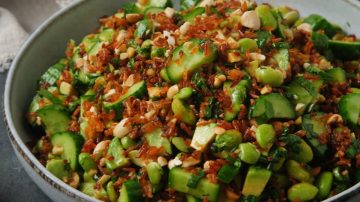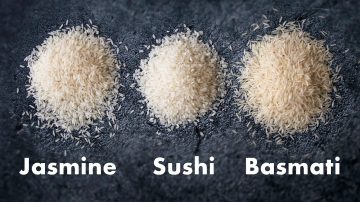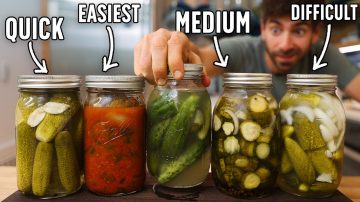How To Make Homemade Sake
Recipe Overview
Overview
Making your own sake at home is an exciting journey into the world of fermentation. This recipe simplifies the traditional process, making it accessible for beginners while still yielding delicious results. The key ingredients—rice, Koji, yeast, and water—come together in a fascinating way, showcasing the science behind brewing.
The use of Koji is particularly interesting; it’s a mold that transforms the starches in rice into sugars, which are then fermented by yeast to produce alcohol. This dual fermentation process is what sets sake apart from other alcoholic beverages. The video emphasizes the importance of using quality ingredients, especially rice, which can significantly affect the final flavor.
One of the standout moments in the process is the steaming of the rice, which ensures that each grain is perfectly cooked and ready for Koji inoculation. The meticulous attention to detail, such as maintaining the right temperature and humidity for fermentation, is crucial for achieving the best results. The video also highlights the importance of patience, as the fermentation process can take several weeks.
As the sake ferments, the aromas develop beautifully, creating a unique and fragrant beverage. The final product can be enjoyed fresh or aged, with the aging process enhancing its complexity. This homemade sake not only serves as a delightful drink but also as a testament to the rewarding experience of brewing at home.
Recipe Details
Steps & Tips
Tip: Steaming rice for Koji helps achieve individual grains that can be inoculated effectively.
Soak 4 lbs of dried rice overnight for Koji making.
Steam the soaked rice for 45 to 50 minutes, flipping midway for even cooking.
Cool the steamed rice down to at least 90°F before adding Koji spores.
Tip: Using a dehydrator or heat mat can help maintain the right temperature for Koji fermentation.
Place rice in trays, cover with a damp towel, wrap in plastic, and put in a dehydrator at 85°F.
Sprinkle Koji spores evenly throughout the cooled rice.
After 40 to 50 hours, check the rice for even mold spread.
Soak 10 lbs of rice overnight for sake making.
Steam the soaked rice for sake.
Add the steamed rice to a clean fermenting vessel.
Add cold water to the rice in the fermenting vessel.
Tip: For small batches, find reliable recipes online to ensure correct ingredient ratios.
Add filtered water, Koji, yeast, and hops to the fermenting vessel.
Tip: Using hops can prevent bacterial spoilage in sake fermentation.
Seal the fermenting vessel to create an anaerobic environment.
Taste the sake along the fermentation process.
Tip: Aging sake can help smooth out the alcohol bite and improve flavor.
Strain the fermented sake through cheesecloth to remove solids.
Refrigerate the sake overnight to separate clear liquid from sediment.
Cork and label the bottles before storing them to age.
Funnel the sake into bottles and mix to achieve desired clarity.
Frequently asked questions
Below you will find answers to the most common questions about this recipe.
Got a Recipe Question? Ask Away!
Interesting Tidbits
- •Sake is made from four primary ingredients: rice, Koji, yeast, and water.
- •Koji is a mold that helps convert starches in rice into fermentable sugars.
- •The process of sake brewing involves parallel fermentation, where both saccharification and alcoholic fermentation occur simultaneously.
- •Polishing rice removes proteins and fatty acids, resulting in a cleaner tasting sake.
- •Aging sake can enhance its flavor and smooth out the alcohol bite.
























